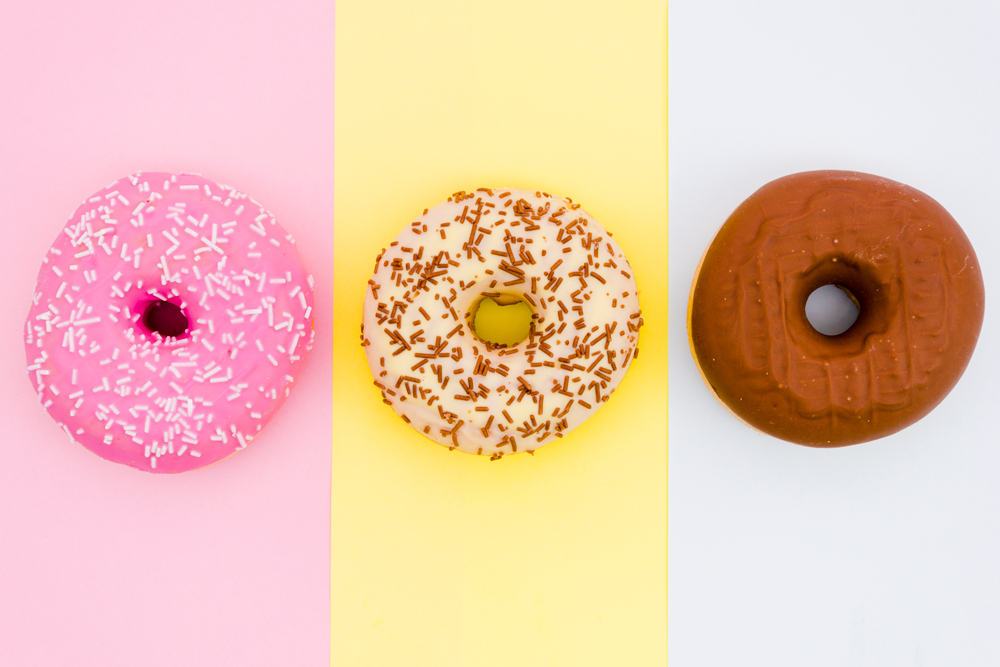
Navigating Online Meeting Fatigue: Strategies for Zoom and Beyond
Online meetings can be both a blessing and a curse. Here’s how we think you should handle them to make them more the former than the latter.
Starbucks vs Dunkin. They are the two largest eatery chains in the United States that specialize in coffee. While both companies maintain similar menus and overall strategies, there are key differences in their business models related to scale, store ownership and branding.
Despite being founded 20 years after Dunkin’ Donuts, Starbucks grew aggressively and is a substantially larger company. In FY 2017, Starbucks generated over $22 billion in revenue while Dunkin’ Brands reported sales of more than $860 million. Starbucks has a larger footprint, with some 28,209 locations worldwide, compared to Dunkin’ Brands’ more than 20,500 points of distribution across the globe. At the national level, Starbucks leads with about 14,000 locations compared to the nearly 9,200 Dunkin’ Donuts locations in the U.S. Starbucks plans to open another 3,400 stores in the U.S. by 2021 and double down on markets such as China, while Dunkin’ plans to open 1,000 net new stores by the end of 2020. Starbucks has expanded beyond the U.S. more extensively, with 27,339 locations in 75 different countries, as of the end of 2017. Dunkin’ Brands has a substantial international presence, though many of its international locations are Baskin-Robbins ice cream stores rather than Dunkin’ Donuts stores. While only 3,397 Dunkin’ Donuts stores exist outside the U.S., the company boasts 5,422 international Baskin-Robbins locations, compared to its 2,560 U.S. stores.
Dunkin’ Donuts international revenue in Q1 2018 of $5.4 million contributed less than 4% of total sales, which came in at $139.9 million. Roughly 30% of Starbucks’ consolidated net revenues of $6 billion in the most recent period ended April 1 were attributed to markets outside of the Americas. Dunkin’ has announced aggressive international and domestic expansion plans with the hope of challenging its main competitor’s footprint, but the difference in scale stems from variations in expansion strategy.

Nearly all of Dunkin’ Brands’ locations are franchises. Licensed Starbucks stores are disproportionately located outside the United States, as corporate owned and operated stores account for 59% of stores in the U.S and 48.6% of locations overseas.
Dunkin’ Donuts’ higher exposure to franchise and rental income leads to a fundamentally different business than Starbucks’ largely owner-operator model. This has major implications for revenue streams, cost structure and capital spending.
Company-operated stores have different operational and capital expense structures from franchised locations. Cost of goods sold (COGS) and store operating expenses are a much larger percentage of sales for Starbucks than Dunkin’. Because COGS is so much more prominent in Starbucks’ expense structure, its profits are more severely impacted by changes in coffee bean prices. Starbucks also has a higher capital expense burden than Dunkin’ Donuts, which is not obligated to purchase kitchen equipment for franchise locations.
Focus and Branding
Dunkin’ Donuts markets itself primarily as a coffee seller that also offers donuts and food, a fact made apparent by a coffee cup prominently featured on the company’s logo and executive management’s explicit assertion that Dunkin’ Donuts is a beverage company. Despite building an identity as a coffee seller, food is still an important element of Dunkin’ Donuts’ offering. In recent years, Dunkin’ Donuts has focused increasingly on nontraditional food options with the hopes of attracting customers outside of breakfast hours. The introduction of steak to its menu in 2014 was a step toward incorporating heartier food items alongside a growing number of sandwich options. Dunkin’ Donuts’ interiors are designed differently from Starbucks stores, with the former often resembling fast food stores in furnishings and decor.
Starbucks brands itself primarily as a beverage provider that offers a more typical coffee house dining experience. Starbucks locations are designed with the comfort of their customers in mind. Free internet access and inviting decor offer a more enticing option for those looking for a place to read, relax or chat with friends. This also makes going to Starbucks a potential social activity, turning the stores into a destination rather than a simple distribution location. This appeals to customers seeking a premium experience. Typically, these customers have higher disposable incomes and are more willing to pay extra for higher quality materials. In economic downturns, people with lower disposable incomes are more likely to alter their consumption habits than people with larger financial cushions. While Starbucks is undeniably impacted by the macroeconomic environment, it is firmly established with a more resilient and less price-sensitive customer base, which helps to dampen the blows brought on by economic cycles. Like Dunkin’ Donuts, Starbucks has also shifted focus to include more products aimed at afternoon and evening customers. These include small plates and sandwiches as well as wine and beer. Both companies have doubled down on strategic tech initiatives like mobile ordering and delivery, explaining Dunkin’ Donuts’ partnering with Alphabet Inc.’s (GOOGL) navigation app Waze, announced in March 2017.
Starbucks has built a more premium brand than Dunkin’ Donuts. Starbucks offers a more extensive menu and more product customization, which is reinforced by writing each customer’s name on the side of their cup. The company offers a comfortable and quiet environment with free wireless Internet access, encouraging customers to stay to socialize, work, study, browse media or listen to music while consuming their Starbucks product. Taken together, these factors form a more premium experience and command a higher price point. Dunkin’ Donuts has more competitive pricing, focusing on the middle class. In company filings and earnings conference calls, Dunkin’ Donuts’ management has described its intent to be the lowest cost provider in the market while maintaining quality above an acceptable minimum.

Financials
Because Starbucks operates its own stores, it has tighter margins than Dunkin’ Donuts. Starbucks posted non-GAAP operating margin of 16.2% its fiscal second quarter 2018, compared to Dunkin’ Brands’ operating margin of nearly 30% in Q1. In the second quarter of 2018, Starbuck’s comparable store sales rose 2% in the Americas, while fiscal 2017 sales growth of 3% marked its worst in five years.
As mentioned earlier, Dunkin’ Donuts has a lower capital expense burden than Starbucks. Dunkin’ Donuts’ $14.6 million in capital expense in full year 2017 compared to net operating cash flow of $276.91 million and revenues of $860.5 million. Starbucks’ $467.4 million of capital expenses compared to net cash flow from operations of $4.4 billion and revenue of $22.4 billion. This discrepancy is a consequence of the different store ownership structures for the two companies, and it has material consequences for the fundamentals available to investors.
Investors should also note the difference in capital structure between the two companies. Dunkin’ Donuts has a debt-to-enterprise value of 0.39 versus Starbucks’ ratio of 0.05.
Changes in Leadership
In mid 2018, both companies reorganized management. On June 4, 2018, Starbucks released a press release announcing Howard Schultz’s departure from the company. Myron E. Ullman was appointed the next Chair of Starbucks Board of Directors and Mellody Hobson was appointed Vice Chair. (See also: Who is Myron E. Ullman, New Starbucks Chairman? )
In a press release posted on July 11, 2018, David Hoffman was named CEO of Dunkin’ Brands. In 2016, Hoffman joined Dunkin’ Brands as president of Dunkin’ Donuts U.S. He led the company’s U.S. business and directed the coffee chain’s new concept store. Hoffman will replace Nigel Travis, 68, who is retiring from his role. Travis began as CEO in 2009. He will serve as executive chairman of the board and focus on developing the international business.
Updated on August 15, 2020

Online meetings can be both a blessing and a curse. Here’s how we think you should handle them to make them more the former than the latter.

Learn how to leverage brand awareness for increased sales and business growth. Unlock the power of branding to maximize revenue potential.

Live Commerce หรือก็คือ ‘ไลฟ์สดขายของ’ ที่เติบโตสุดๆ ในโลกยุคดิจิตอล แต่อะไรกันแน่ที่ทำให้คนชอบดู ชอบช้อปในไลฟ์?
1015/29 Sukhumvit 71 Road,
Watthana, Bangkok 10110
©2024, MOST 2414 Co., Ltd. • VAT No. 0105558155913 • Terms & Conditions • Privacy Policy • PDPA • Sitemap
| Cookie | Duration | Description |
|---|---|---|
| cookielawinfo-checbox-analytics | 11 months | This cookie is set by GDPR Cookie Consent plugin. The cookie is used to store the user consent for the cookies in the category "Analytics". |
| cookielawinfo-checbox-functional | 11 months | The cookie is set by GDPR cookie consent to record the user consent for the cookies in the category "Functional". |
| cookielawinfo-checbox-others | 11 months | This cookie is set by GDPR Cookie Consent plugin. The cookie is used to store the user consent for the cookies in the category "Other. |
| cookielawinfo-checkbox-necessary | 11 months | This cookie is set by GDPR Cookie Consent plugin. The cookies is used to store the user consent for the cookies in the category "Necessary". |
| cookielawinfo-checkbox-performance | 11 months | This cookie is set by GDPR Cookie Consent plugin. The cookie is used to store the user consent for the cookies in the category "Performance". |
| viewed_cookie_policy | 11 months | The cookie is set by the GDPR Cookie Consent plugin and is used to store whether or not user has consented to the use of cookies. It does not store any personal data. |